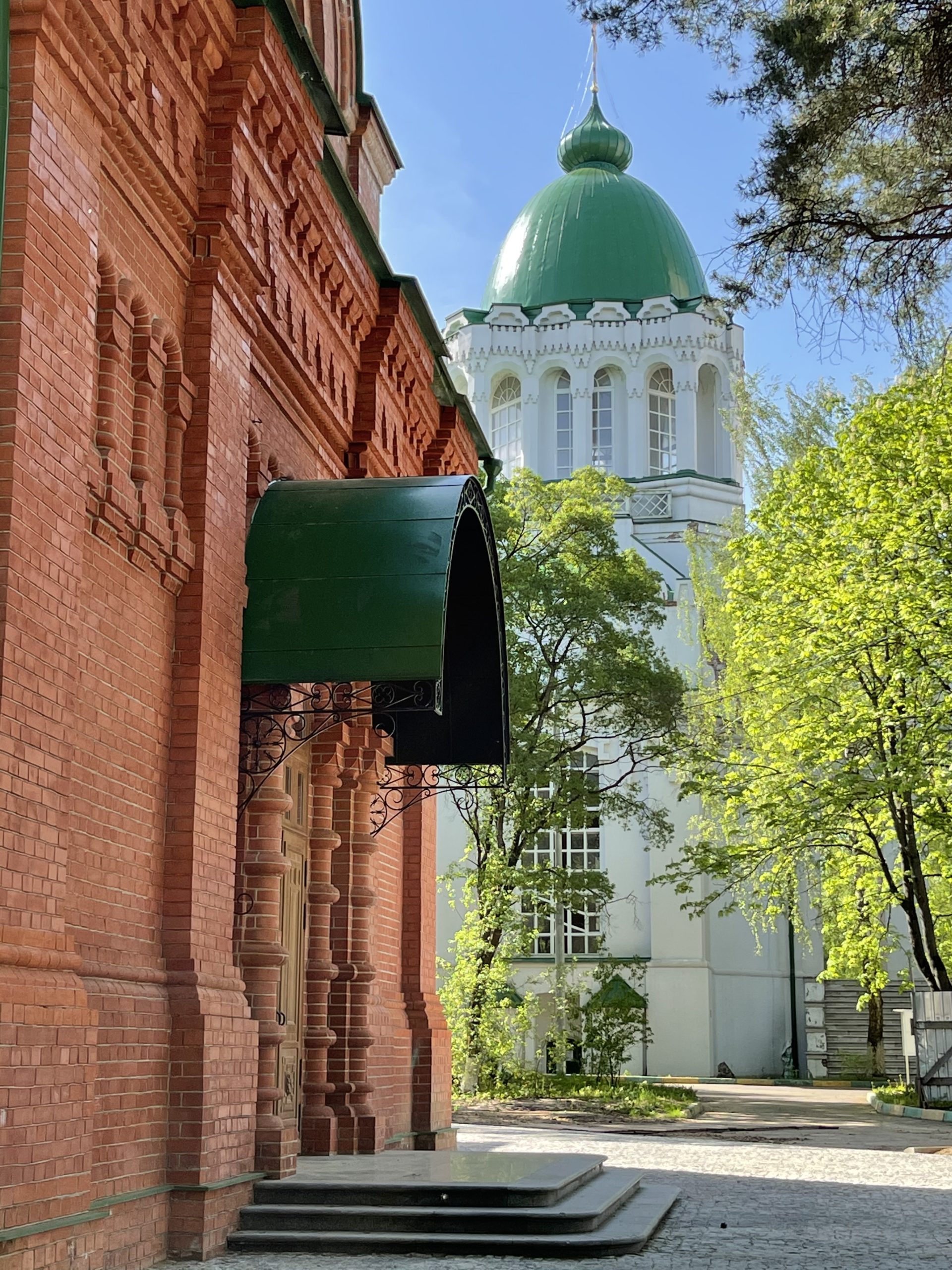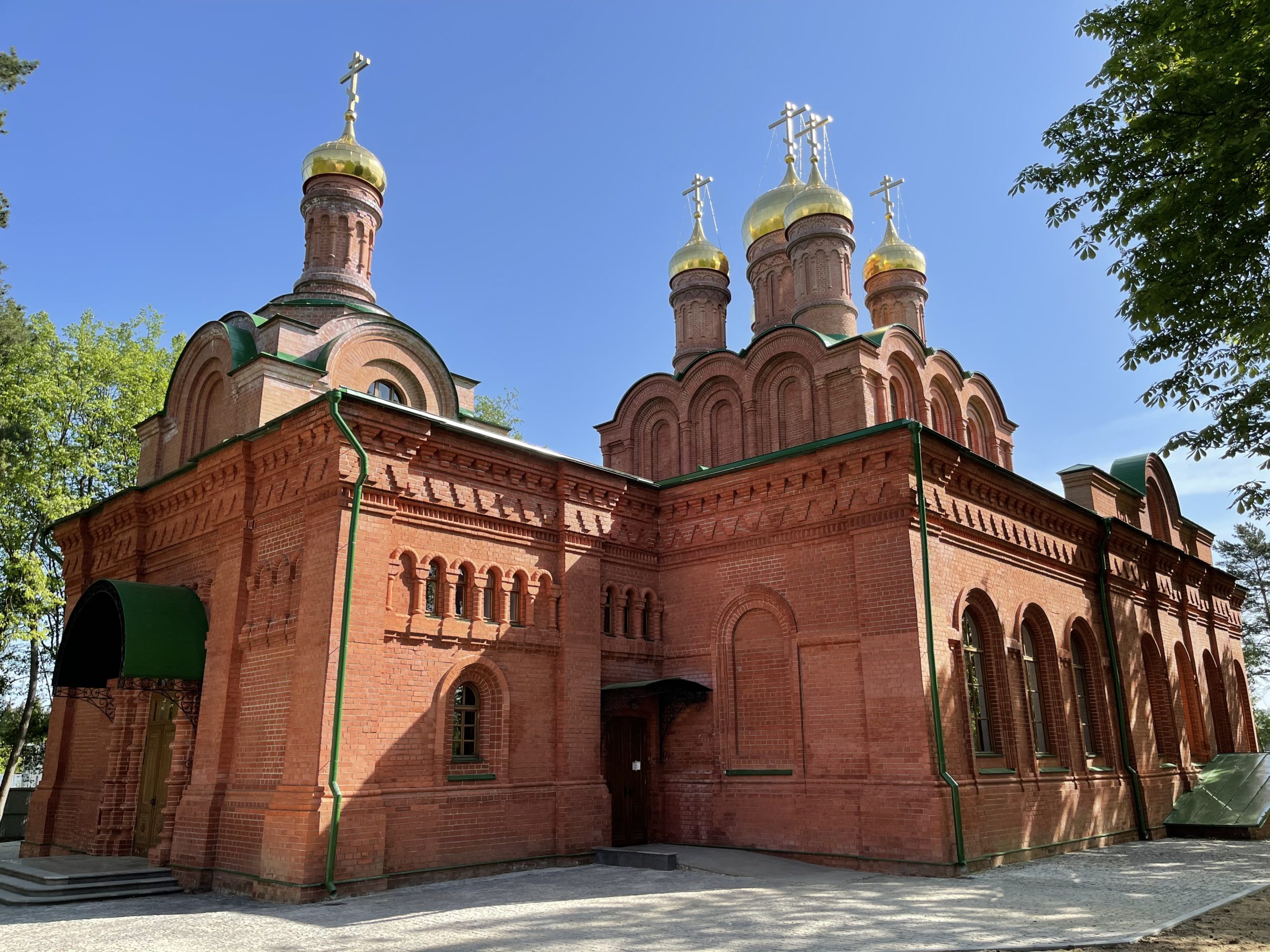Church of the Life-Giving Trinity in Filimonki

In the 18th century, the Filimonki estate belonged to the princes Svyatopolk-Chetvertinsky. In 1855, Prince Vladimir Borisovich began the construction of a two-story Trinity Church. The project was designed by architect Peter Karlovich Kazikha (according to other sources — Julian Frantsevich Thibault). After the death of the prince, his sister Vera Borisovna completed the construction. In 1861, the lower altar was consecrated in honor of St. Sergius of Radonezh, and in 1868, the upper one, dedicated to the Life—Giving Trinity. There was a tomb of the princely family under the temple. The architecture of the temple combines elements of Ancient Russian, Byzantine and Romanesque styles. The building was illuminated through large windows in the dome. Nearby stood a 53-meter-high five-tiered bell tower in the Gothic style with a spiral staircase. The largest bell weighed almost 803 kg. In 1891, the Prince Vladimir Convent was established in Filimonki in memory of the miraculous rescue of the royal family during the train crash at Borki station in 1888. However, during the Soviet era, the monastery was closed, and its buildings, including temples, were destroyed. Only the stone building of the cells has been preserved. In 1975 . The Psychoneurological Boarding School No. 5 was opened on the territory of the former monastery, where they provide assistance to the elderly and the disabled with mental disorders. The Filimonki Social Adaptation Center also operates here, helping homeless people with disabilities. On April 15, 2012, on Easter Day, His Holiness Patriarch Kirill of Moscow and All Russia visited the Center. Today, the Trinity Church has been restored, and the Assumption Church is gradually regaining its historical appearance. These architectural monuments continue to serve as a reminder of the rich history of the village of Filimonki and its spiritual heritage.
Address: village Filimonki

